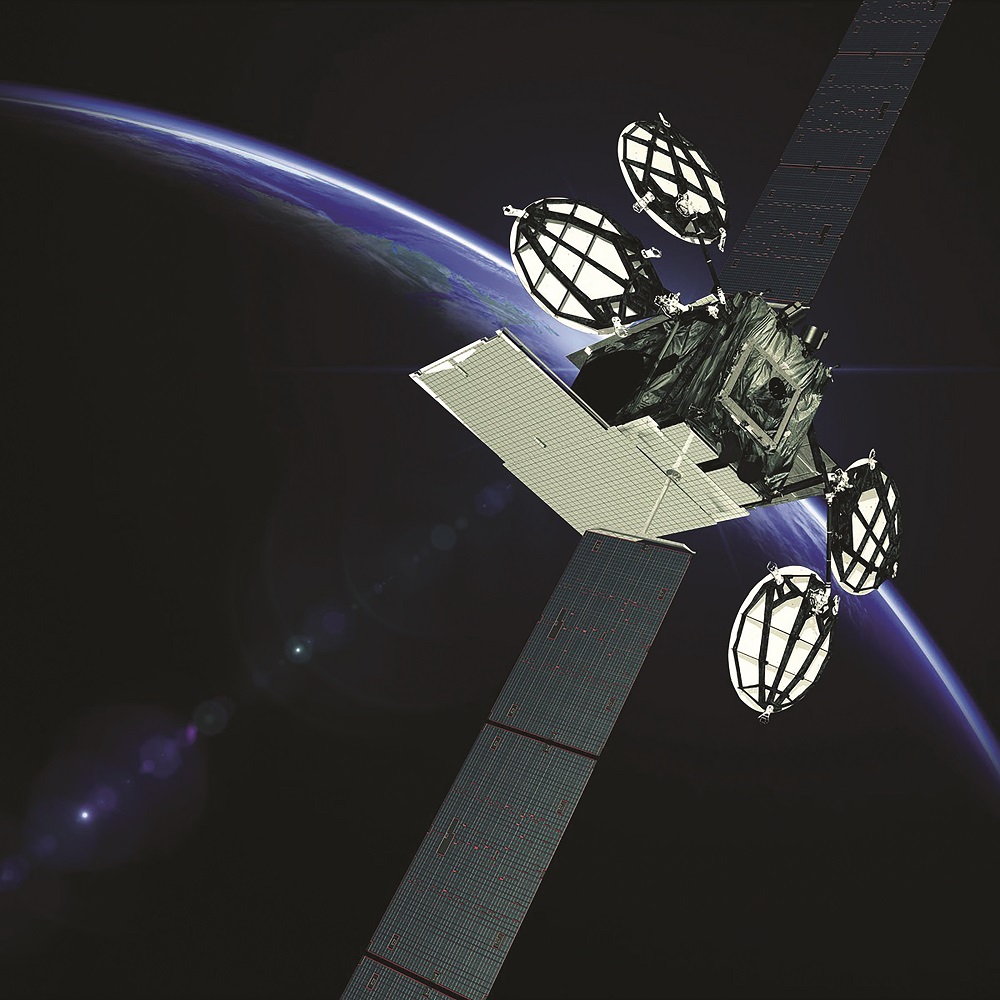TAMPA, Fla. — The first ViaSat-3 broadband satellite is on track to launch in the first half of 2022 despite ongoing pandemic-related challenges, according to Viasat’s recently appointed chief operating officer Kevin Harkenrider.
The high-throughput satellite’s Viasat-built payload has been integrated with a chassis provided by Boeing for tests that will continue into early next year, Harkenrider told SpaceNews in an interview, ahead of a launch on a SpaceX Falcon Heavy rocket.
Harkenrider joined Viasat in October 2006 and was the company’s executive vice president of global operations and chief operations officer before being promoted Nov. 17 to the COO role.
He took responsibilities previously held by Viasat president and CEO Rick Baldridge, as the U.S.-based company prepares to transform its business with the next-generation ViaSat-3 constellation — and the $7.3 billion acquisition of British satellite operator Inmarsat.
However, deploying the first of three Ka-band ViaSat-3 satellites in the first half of 2021 to geostationary orbit, where it aims to provide a terabit or more of capacity over North and South America in the second half of the year, is the “number one priority” for Viasat, Harkenrider said.
Viasat had initially planned to launch the first ViaSat-3 satellite in 2019 before pre-pandemic problems with an unnamed component supplier, and then manufacturing delays related to COVID-19, pushed it into 2022.
New COVID-19 variants have contributed to delays for satellite manufacturers including Europe’s Thales Alenia Space, which recently told Telesat that the pandemic is delaying construction of the Canadian satellite operator’s $5 billion low Earth orbit Telesat Lightspeed broadband network.
But while “COVID clearly creates complications” for global supply chains and domestic operations, Harkenrider said Viasat and its manufacturing partner Boeing have a good handle on the situation, with social distancing and other precautions in place at facilities to reduce the risk of infections.
“We’ve been luckily able to avoid any significant disruption, but I don’t want to make you think we don’t stay mindful every day of it,” he said.
Viasat has previously said it plans to deploy the second ViaSat-3 satellite, which will cover Europe, the Middle East and Africa, roughly six months after ViaSat-3 Americas, followed by a third ViaSat-3 for Asia Pacific.
In addition to SpaceX, Viasat has launch agreements with Arianespace and United Launch Alliance for the constellation.
Harkenrider said Viasat is busy working through regulatory regimes worldwide as it prepares to enter new geographical markets.
The acquisition of Inmarsat also significantly boosts Viasat’s international aspirations, while broadening the operator’s broadband network across multiple orbits and spectrum bands.
However, while Viasat’s acquisition of U.S.-based consumer satellite broadband provider WildBlue Communications took just months to complete in 2009, the Inmarsat deal is significantly more complex and requires approval from multiple parties including the U.K. government.
Viasat expects to be working through much of 2022 to clear regulatory hurdles in the way of closing the Inmarsat deal, “but we can’t lose sight of what we have to do to position ourselves ready for ViaSat-3,” Harkenrider added.
